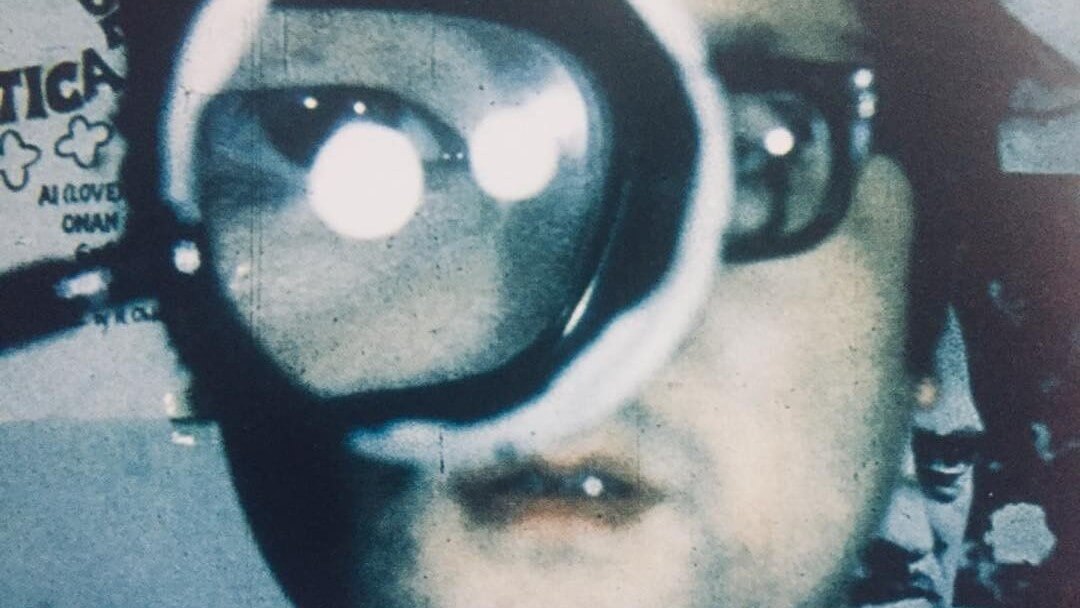
‘Takahiko Iimura is a pioneering film and video artist based in Tokyo and New York. In the 1960s, he was a crucial conduit between the Japanese and American avant-gardes. His work ranges from poetic fluxus-influenced pieces to rigorous formal and conceptual investigations. In the 1970s and 1980s, Iimura’s videos exposed and analysed screen spectatorship. He pared down video to its essential structural elements and revelled in the absurd feedback loops and infinite regresses—optical and semantic—that resulted. Foregrounding costruction alongside content, and pressuring language, Iimura’s video semiology paralleled the semiologies of Roland Barthes and Jacques Derrida.
‘Absurdly analytical, Iimura’s videos are also funny. In AIUEONN (1994), we see and hear him speak each Japanese vowel in turn. Then image and sound part company, as we see him pronounce one vowel but hear another, working through every possible permutation. The images of his face are also distorted, echoing the disjunction of sound and image. For OtherFilm Festival 2012, Iimura will perform AIUEONN with a live soundtrack. He will also reprise his 1963 expanded-cinema performance Screen Play, projecting his film Colours—a study of chemical reactions resulting from dropping paint into oil—onto a friend’s back.
‘Armed with a forensic scalpel, Takahiko Iimura dissects video, removing organs one by one, systematically probing until he locates the vital twitching organ. There, he’s got it now, held between gloved fingers, unlatched from the secure lining of the onto-sphere, decoupled and placed on the tray for our inspection. The signifier-signified dyad. Coldly, methodically, he begins to rearrange the units. This way, that way. This and this, this but not that. A genetic recomposition of codes; accumulating permutations in search of the différance between word and image; space and movement; you, I, and me. Video language is semiological . . . semi-illogical.’ — Other Film
___
Stills


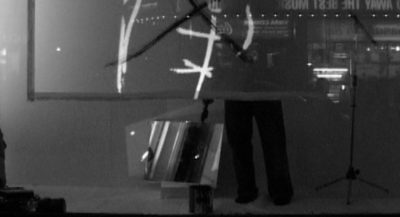


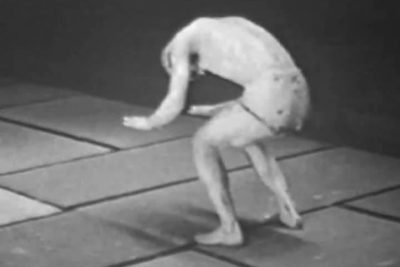
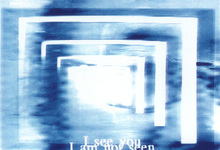
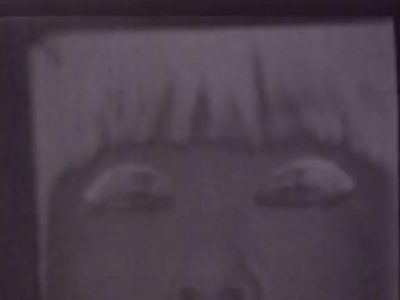
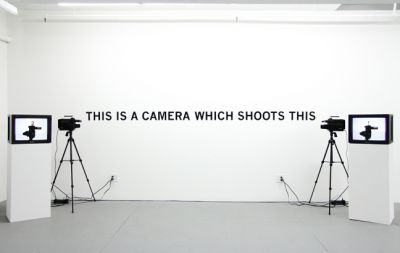

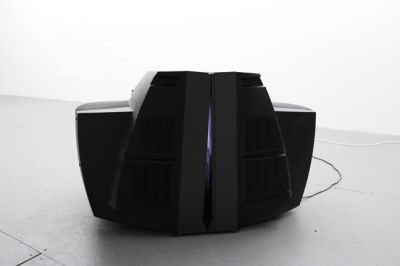
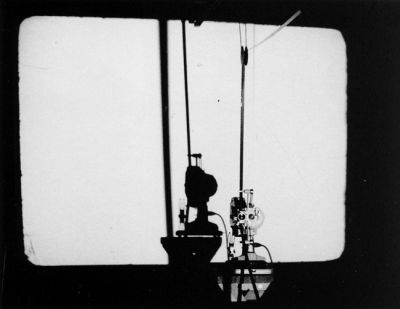
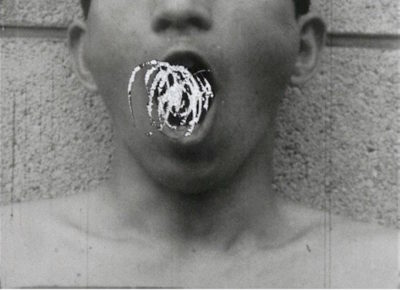

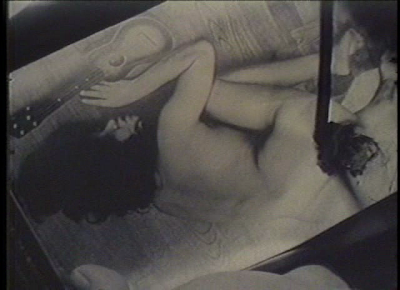



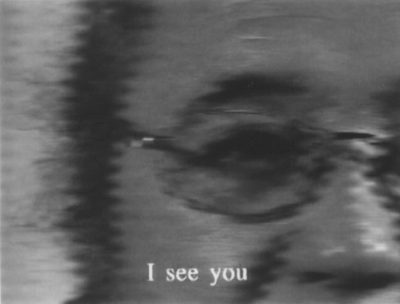

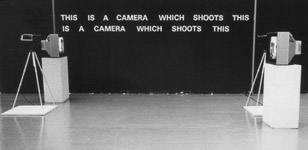

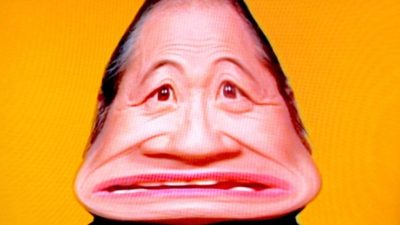
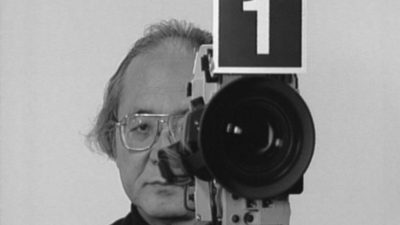



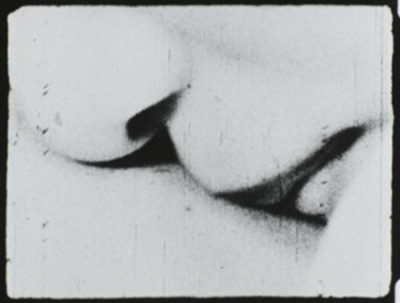
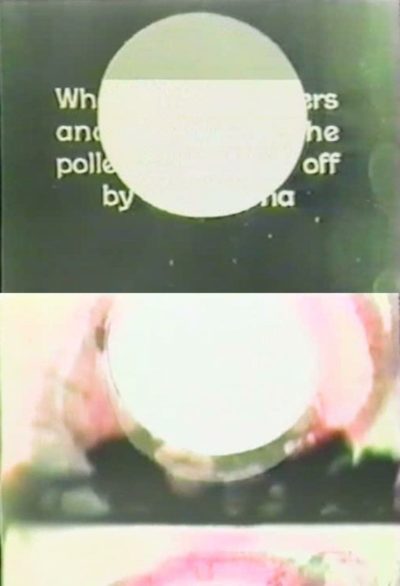
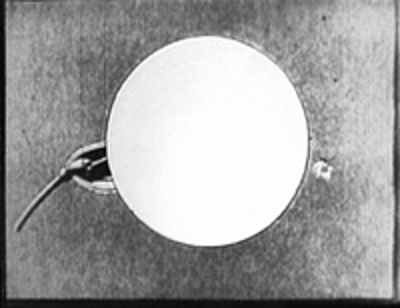
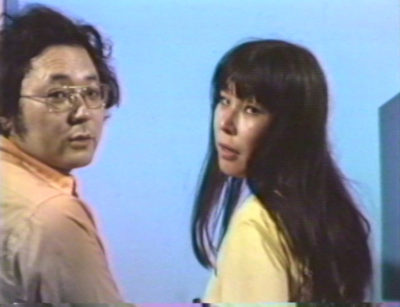
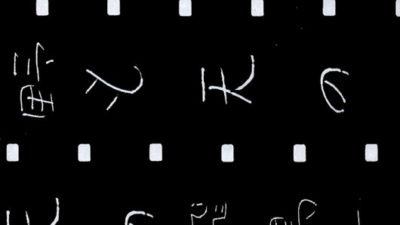
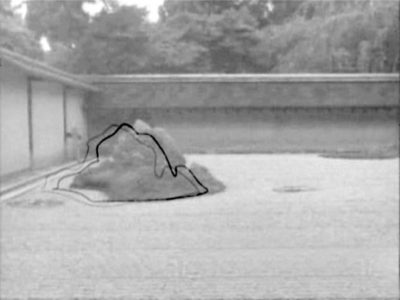
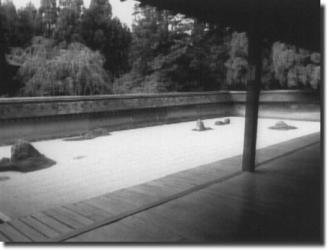
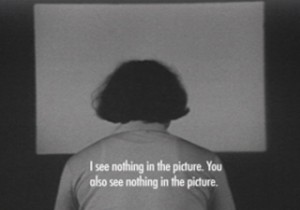
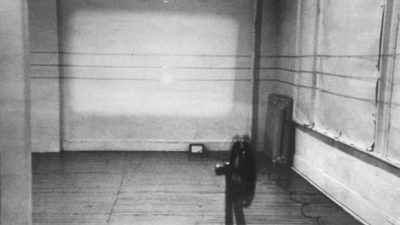
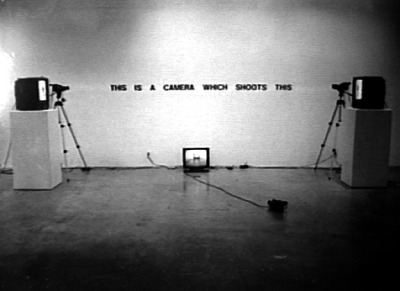





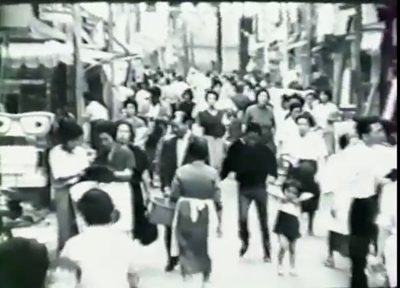
____
Further
Takahiko iimura @ Video Data Bank
TI @ Lightcone
TI @ The Film-makers Coop
TI @ IMDb
TI @ Re:Voir
Observer/Observed: An Interview with Takahiko Iimura
Book: ‘The Collected Writings of Takahiko iimura’
Book: ‘PAPER FILM LOVE’
John Cage Performs James Joyce by Takahiko Iimura
INTERVIEW: TAKAHIKO IIMURA
Takahiko Iimura – Seeing / Hearing / Speaking
THE BLINDING CINEMA OF TAKAHIKO IIMURA
An Interview with Takahiko Iimura: Sept-Oct 2010
Takahiko Iimura – Midnight Eye interview
TI @ MUBI
DIY: Takahiko Iimura
_____
Extras
Takahiko Iimura: Presentation Of Multimedia Works And Discussion
Trailer: Takahiko iimura ‘Talking My DVDs With the Excerpts’
Takahiko Iimura, Concept Tapes 3 (Excerpt)
____
Interview

Damien Sanville: To start off, I would like to ask you what the atmosphere of the 60s avant-garde scenes were like in both Japan and America?
Takahiko Iimura: I started my experiments in filmmaking in the early-60s in Tokyo. At the time I was very interested in Dadaist and Surrealist films, which became really important in Japan much later then when these movements actually took place in Europe. It was only from the 50s onwards that we had more information about what was going on in America and Europe; the first impact was for us – and especially for me – the Neo Dadaism.
My first experiments were in poetry, when I was in high school. I used to write Dadaist poems. I was also influenced by the visual arts. At the time Junk Art, Action Painting and Happenings were flourishing.
DS: So your films were less a reaction against the conventional and established cinema than in the lineage of fine arts?
TI: That’s right. Most of my friends were artists not filmmakers…
DS: What are the differences between nowadays and the 60s?
TI: Now there are more venues, more people involved and more schools than in the 60s. Yet there are less debates and problematics are less obvious.
DS: How was Junk received in Tokyo? Did you show it in film festivals at the time?
TI: There were no film festivals at the time. I showed it in a gallery – where they used to show a lot of what you call “anti-art” – together with my friend Yasunao Tone, composer of avant-garde music, who wrote the score for this film. We called the piece a “Film Concert” for there wasn’t such a word as “Performance” yet.
DS: What made you come to New York?
TI: Yoko Ono and John Cage came to Tokyo to do a tour. So I asked Ono to come and see my film Ai (Love) which consists of close-ups of body movements. I asked her to make the sound for it and she did by recording the noise outside her window. Then she brought the film to New York and showed it to Jonas Mekas who wrote a very nice review about it – no one in Japan appreciated it in such way at the time (Laughs). So I wanted to come to New York. I also met Donald Richie in Tokyo who was an experimental filmmaker and wrote a lot about Japanese cinema. Together we created a group called Japan Film Independent as well as organised the first experimental film festival.
DS: That was in Tokyo?
TI: Yes, in ‘64. I moved to NY in ‘66.
DS: How has New York influenced your approach to filmmaking?
TI: Quite a lot. I went to the [Filmmakers’] Cinematheque almost every day and watched lots of 60s American experimental films, by filmmakers like Stan Vanderbeek, Stan Brakhage, Jack Smith, etc, whom I later on made film portraits of.
DS: Your films have been shown in both galleries and cinemas. Do you have any preferences regarding the context in which they are shown?
TI: I like both of them. Even though I don’t make 16mm films anymore – I make videos – I still use film as material for installation and performance. Later in the 70s, I focused on the theme of Time, the temporality in film and I used both galleries and cinemas. 24 Frames Per Second, for instance, works the best on screen; whereas a film-installation such as One Second and Infinity, which is on a loop, works better in galleries.
DS: You have mentioned a relation between Observer/Observed with films such as Battleship Potemkin and Man with a Movie Camera. Can you tell us how these films relate to yours?
TI: There are parallels between Observer/Observed and Dziga Vertov’s Man With a Movie Camera. We not only see what he shot but also himself with a camera, somehow combining the process of filmmaking and the production of it. I do feel closer to Vertov than Eisenstein, although Eisenstein’s idea of the montage refers to Chinese characters, which combine two elements to create another meaning.
DS: Can you tell us a bit more about your “Video Semiology?”
TI: Video Semiology is related to a video trilogy Observer/Observed and more specifically to a video installation This Is a Camera Which Shoots This. In this piece there is an exchange between the two cameras facing each other, one shooting the other one, creating a feedback that is also in the sentence: “This is a camera which shoot this … is a camera which shoot this …”: an endless sentence in which the subject and the object become one another.
DS: Do you see parallels between your researches in Video Semiology and the work of Bruce Nauman, for instance Lip Sync?
TI: The sync/out of sync is a very important element in video. I once did this performance: I am sitting next to a video of me speaking and at the same time I dub it, so the two voices are superimposed. The live voice and the voice from the tape are mixed together and it becomes difficult to tell which one comes from which source.
DS: There are occurrences of the space in-between, or the interval, in most of your video pieces: the space in-between the self in a way.
TI: This is what I am dealing with in Seeing/Hearing using Jacques Derrida’s quote: “I hear myself at the same time that I speak.” When you read the sentence you can identify the “I” who speaks with the “I” who hears. But in reality the “I” who speaks and the “I” who hears are split. So when I say: “I hear myself at the same time that I speak to myself at the same time that I hear” there are two “I’s.” So when I hear, “I” is not the same as the one who is heard by “I” when I speak. Although the quote is “at the same time,” it is not exactly at the same time.
DS: Could you explain what the concept of “MA” is?
TI: It is a very common term in Japanese. MA means something “in-between”, not only in space but also in time. Time and space come together, they are inseparable, and in film you always have to deal with both of them. I have approached MA in different ways. I did shoot this garden in Ryoan-ji, the Zen-Buddhist rock garden in Kyoto, where you see a lot of the space in-between the stones. People walk or sit around it for meditation. There are only fifteen stones, big and small, and yet you cannot see them all at once. You have to move from one end to the other in order to count them all. The design of the garden invites you to walk around it, to have a space in time. In my film 24 Frames Per Second, the concept is like the Chinese Yin and Yang. It combines positive within negative, and negative within positive in a double structure: a white dot in black and a black dot in white. 24 Frames is made in this way, we see one black frame within one second of white, and one white frame within a second of black. The black frame moves every second, starting from the first frame and then reaching the 24th frame. And this is the same for a white frame until white becomes black and black becomes white. That is the way the ancient Chinese looked at the universe. It is this dialectic that I try to present in these works.
DS: Part of this series is a film called MA (Intervals). What was the material used for this one?
TI: I used black space and white space. Then a line crosses in the middle – a white line on black and black line on white so there are four kinds of images each of which lasts one second. I made the sound by scratching the soundtrack. Every second or 24 frames you hear two short beeps or a continuous beep, both sounds being one second long. But the duration of the two beeps sounds shorter than the continuous one.
DS: What about silence in traditional Japanese music?
TI: We use silence a lot, in the spoken language, Haiku, the Noh theatre… There is always silence, which sometimes dominates, and is sometimes hidden. Both silence and the empty space are important factors, for instance in landscape drawings, there is always a lot of white space.
DS: Time, space, the space in-between, rhythm: There are many echoes between the formal minimalism of your later videos and John Cage’s music.
TI: I once asked him how he made his famous “silent piece.” In this concert the pianist just opened the lid of the piano, then closed it and timed the performance with a stopwatch. He is my predecessor, as he said: “Time is the most important factor in music,” and in response I would like to say that time is also the most important factor in film.
_____________
13 of Takahiko Iimura’s 33 films
_____________
On Eye Rape (1962)
‘A found educational film about the sex of plants and animals was punched with big holes in almost every frame throughout the film by myself and an artist friend Natsuyuki Nakanishi who found the film in a garbage. At several points there are inserts of a few frames of a pornographic photo (which would work on a subliminal sense) in which the sex part was covered by black. The film is an irony and at the same time a protest against sex censorship in Japan at the time in which pornographic scenes had to be covered by black. At the end we even punched holes in these subliminal pictures, thereby “censoring” the censored image. A superior work. Considering the whole situation of film/image works at the time, one could say that this is an exceptional film. The film was picked up from garbage by Nakanishi and then Iimura punched with holes throughout the film. The work, which directly attacks both the film physically and the eyes of the audience, was Iimura’s first film (according to the filmography) as well as the first master piece which relates to his later film works of conceptual-art.’ — Masaaki Hirakata
the entirety
_______
Ai [LOVE] (1962)
‘.. in Ai[LOVE] we become strongly aware of the separation between the physical and the semiotic – the perception and the recognition. We understand from this work how creating meaning, at even the most basic level – in the process of recognising a lip, a breast, a wisp of hair – there is a more primitive stage of pre-differentiated sensation. The film, through its form, becomes an arena where we relive that visual learning process, the transitions from raw perception of light and dark, its structuring into coherent pattern, to the projection onto the pattern of a set of associations which make these abstract images stand for a body or a face. This is sexuality embedded deeply in the perceptual and semiotic process.’ — Malcolm Le Grice
the entirety
______________
A Dance Party in the Kingdom of Lilliput (1964)
‘A surper-real comedy with Sho Kazakura. The film is divided into a number of very short scenes or chapters, each with a title at random. we see him lame in a crowd, see him running up stairs, see him absolutely naked, watch him urinate, etc. An anthology of discontinuous happenings and events. “(The film) is related more to ‘structuralist’ films, the image of a naked man being presented as chapters; the sequence is like moving stills, or short statements conveyed by mean of gestures. Each sequence is preceded by a title. Just as a concrete poem consists of words grouped together according to sound, and not necessarily according to meaning, so in this film the image are grouped together according to how to look and not necessarily according to what they meean. Perhaps it would be more accurate to call what are generally known as ‘structural’ films ‘concrete’.” – Stephen Dowskin’ — TFMC
the entirety
_______________
Eye For Eye, Ear For Ear (1966)
‘A positive/negative Structural Film shot the hippie in the 1960s.’ — T.I.
Excerpt
_______________
White Calligraphy (1967)
‘In my view the most interesting of Iimura’s early films – at least those I’ve had a chance to see – is the one least characteristic of this period: WHITE CALLIGRAPHY. To make this abstract film, Iimura drew the Japanese characters for the Kojiki, ‘the oldest story in Japan,’ directly onto dark leader. Since each frame contains a different character, the finished film creates a continually changing retinal collage, which is interrupted intermittently during the final minutes of the film by movements of dark leader. All in all, WHITE CALLIGRAPHY is a sort of filmic concrete poem ….’ — Scott MacDonald
Excerpt
_______________
Dead Movie (1964)
‘Iimura began to hole punch performatively in his first film installation, Dead Movie, 1964, in which two 16mm projectors, one with a black film leader hung and looped from the ceiling and another operating with no film, were placed against opposite walls and facing each other. The hole punch, a destruction of material for the creation of light, was what Iimura called a “peep window” that invites our eyes through the film and onto the screen, or in the case of this installation, onto the projector positioned on the other side.’ — MoMA

____________
Shutter (1971)
‘What I am concerned with in this film is not only the flicker effect, but also the coming and going of an eye-like shape on screen which was created by a fade-in-out device while shooting the light/the bulb of the projector. The viewer literally looks into the light which acts like an eye.’ — T.I.
Excerpt
_____________
Blinking (1971)
‘One of the earliest minimalist video with flicker effects was produced in Tokyo in early 1970s. A flickering video with eyes, which super-impose the positive over the negative, open and close rapidly. At the same time the “blind” effects of video fast-forwarding accelerates/decelerates the picture synchronized with the sound.’ — Fandor
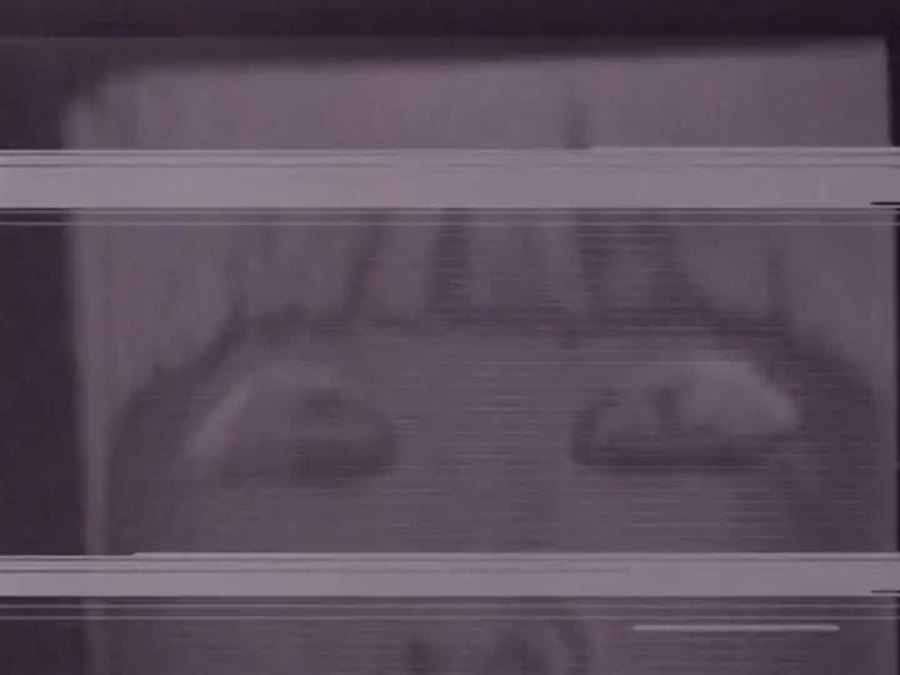
_______________
Yoko Ono: This is not here (1972)
‘With guest artist, John Lennon, and Yoko Ono, a document of YOKO ONO solo exhibition THIS IS NOT HERE at Eberson Museum, New York, 1971. A document of the Yoko Ono retrospective art show with John Lennon as guest artist, “This is not here” held at Everson Museum, New York, 1971. The film begins with Yoko’s speech at the press conference that continues throughout the film as she talks about “radical art”, a non-violent one, and advocates “total communication”. Many important art objects and installations of Yoko’s are seen as the camera goes along with Yoko and John through the installations. Allen Ginsberg and George Maciunas were among two of many guest artists who participated in the exhibition. At the end a “piano piece” by Yoko in which people including John and Yoko are just hitting continuously the surface of a closed piano is overwhelming.’ — T.I.
Excerpt
_______________
Self-Identity (1974)
‘In “Self Identity,” I said in front of the camera, “I am Takahiko iimura,” and “I am not Takahiko iimura,” alternately. Does it sound like a ZEN-MONDO, a question and answer session of Zen monks? Yes, and no. The key of the piece is the former announced with the voice synchronized with the picture and the latter without synchronization, the voice only.’ — T.I.
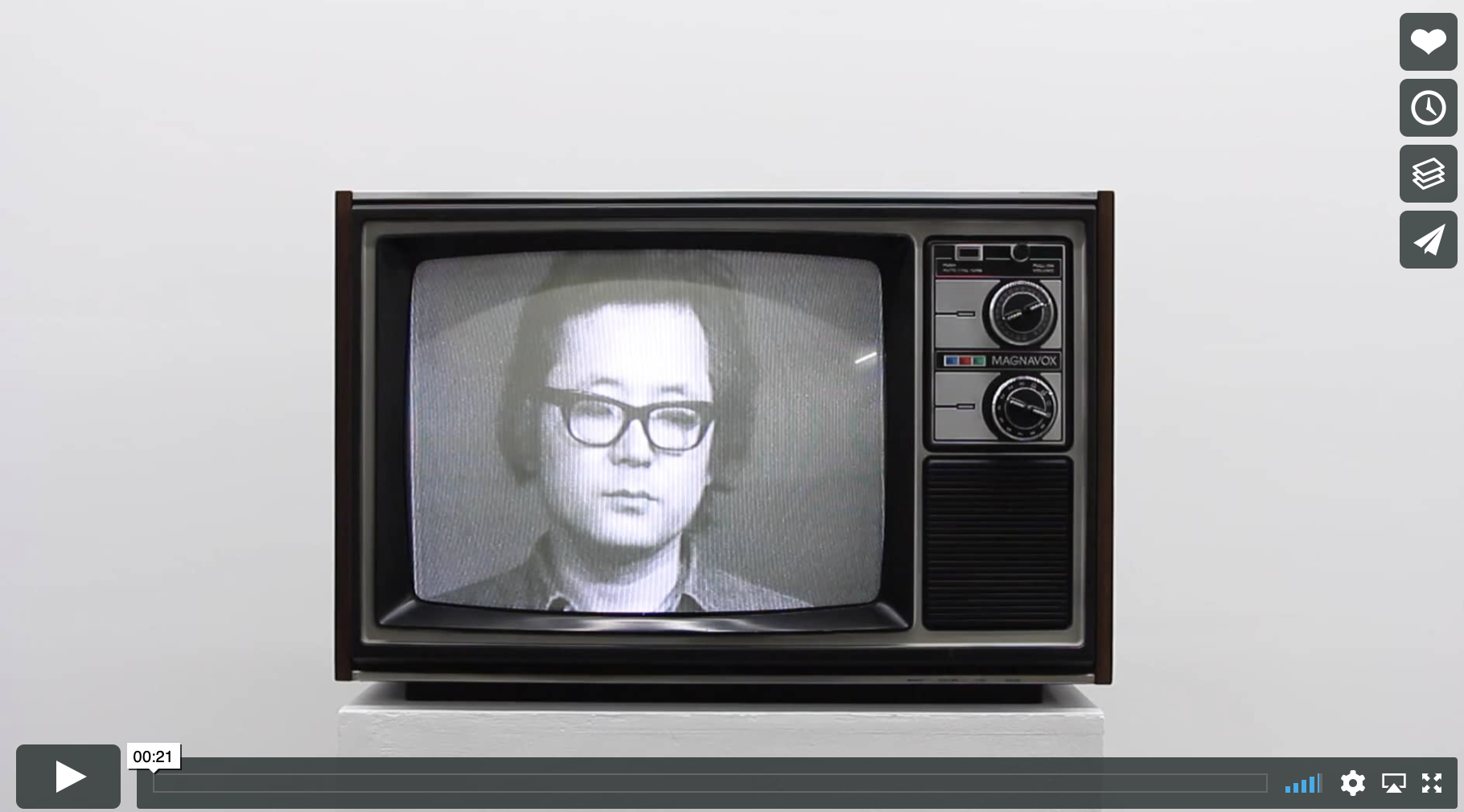
_____________
I Love You (1973-1987)
‘“I Love You” is not a style of confession, but the words, and a linguistic practice using a sentence and shifting the pronouns.’ — letterboxd
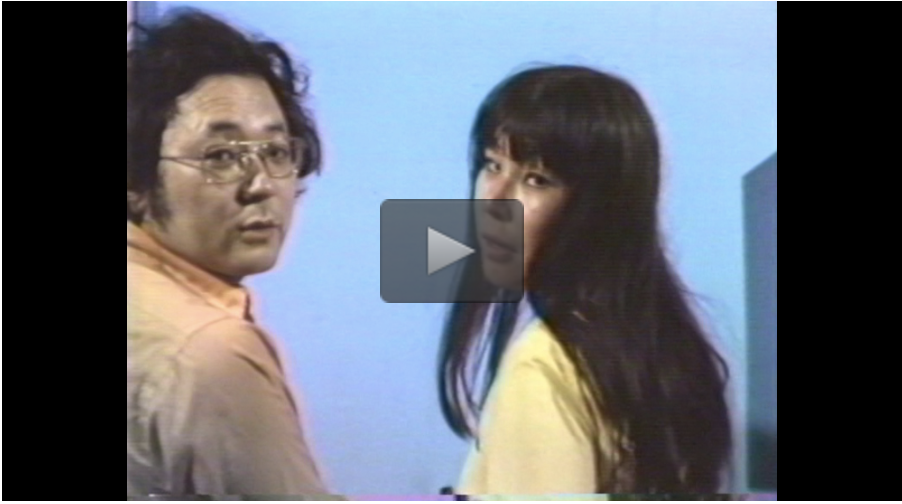
______________
This is a camera which shoots this (1995)
‘Two cameras and two monitors are placed facing each other a certain distance apart. There is a sentence on the wall between them: ‘THIS IS A CAMERA WHICH SHOOTS THIS’. On the monitors the identical images of the camera are seen showing the real thing and the image side by side. The endless sentence is the textual equivalent of the endless video structure, a camera shooting another camera which shoots back at the first camera. In this virtual feedback process, the existing subject-object relationship prescribed by elementary logic becomes relativised. In Imura¹s words: an endless structure as the ‘object’ turns into the subject of the next sentence.’ — Experimental Intermedia

_______________
Aiueonn Six Features (1996)
‘Takahiko Iimura animated visual images of six Japanese vowels that are identical in Japanese as well as in Latin letters. By combining comicality and absurdity, he created six funny faces controlled by the G System (Sony’s system for creating real time digital images). He developed the concept based on Jacques Derrida’s work Differance in which the dissimilarity of image, letter and sound acts within space and motion. Consequently, all the images of the AIUEONN installation differ and delay according to letters and sounds and thus create a case of multiculturality.’ — mfru
the entirety
*
p.s. Hey. ** Milk, Cool. Good one, no? ** David Ehrenstein, Parisians are the opposite of panicking, at least in public, at least so far. When I’m out, I’ve barely noticed any differences at all. Curious. ** Steve Erickson, Ah, well, at least you’ll just get it all over with now/soon to ‘look’ on the bright side. I hope it goes smoothly, and, yeah, try not to worry too much. As I said, things are pretty normal here. Macron made a big announcement last night, and everyone was anticipating France would get locked down and quarantined, but ‘all’ he announced was that schools and universities will close starting on Monday. Otherwise, we’re still at the no 1000+ attendance events, and everything smaller than that is on track. As for your question, I think the answer must already be clear. ** Armando, Hi. I’ll go back to the first version and compare and contrast. I’ll look for your email. Thanks. ** _Black_Acrylic, Hi, man. She sounds really cool, your friend Lene. Sucks about the cancellation. It’s literally strange that so few things are getting cancelled here. ** Bill, Hi, Bill. That should be fine re: the old formatting. When I restore posts, the old coding seems to work here for the most part, and I can make simple adjustments on my end. Thanks so much! I need to order Dodie’s book. Presses so often just send me stuff these days that I can get too lazy when they don’t. ** Kyler, Hi, Kyler! As I said above, it really isn’t that bad here so far. Apart from giant concerts and events, everything is still scheduled and happening. Although I keep anticipating that a shutdown could/will happen any day now. But, yeah, I’m going to a film festival tonight and seeing a music gig tomorrow, and my routine isn’t interrupted really at all. ** Okay. Today you get to discover or cozy up — or both — with the works of the stellar Japanese film and video maker Takahiko Iimura. I hope you’ll take the opportunity, and I’ll see you tomorrow.




 Now available in North America
Now available in North America 
I well recall Takahiko Iimura from the time he spent in New York in the 60’s. He fit right into the work being done by such diverse artists as George Landow (late Owen Land) and Robert Nelson
My Big Emergency ale of Books, DVDs, and CDs continues. Please write to me a cllrdr@ehrensteinland.com
The big concern for today is toilet paper! Like the book “The Road” instead of looking for food, I’m going out to look for toilet paper. It’s absurd. On the other hand, Takahiko Iimura is great. I’m a fan of Japanese contemporary art from the 60s.
Takahiko Iimura is a new name to me and I’m grateful for this primer on his work. A Dance Party in the Kingdom of Lilliput is a good laugh.
My dad comes up to Dundee tomorrow so I’m looking forward to that. Then we’re both heading to Leeds next Tuesday, not for any coronavirus reasons but it will be handy to do some self-isolation with his excellent cooking for a while. My brother and I had tickets for next week’s Leeds v Luton game but today that was cancelled, somewhat inevitably. It was a decision made by the football authorities rather than Boris Johnson, who seemed happy to use the population as a sort of human petri dish for his Social Darwinist experiments.
Hey Dennis.
How has your week been?
To be honest, it’s been trying over here. Maybe you already heard, but Molly Brodak passed away on Sunday. The news was devastating. I had just talked to her two days prior. She also sent me cookies she baked. I’ll never forget how great they tasted. To top it off my Grandma’s back in the hospital. She’s been fighting cancer for a while, and it seems like it’s almost time for her.
Sorry if that’s oversharing, I’m really doing okay. Just a tough week emotionally.
The corona virus caused my school to extend spring break; finally, some dedicated time to read the books piling up on my floor. I’m about to dig into ‘Malina’ which I’m really excited for. Heard great things.
Anyways, I hope you’re doing well. Sending all the love and appreciation your way.
Best,
Kyle
Well, I planned to see DEERSKIN tomorrow night at Lincoln Center. I was able to get a video link today, so hopefully I will be able to check out the word of Dupieux soon. Le Poisson Rouge also canceled a concert by Dorian Electra for which I had bought a ticket. Everything just feels so grim and isolated here.
My parents volunteer at their local library’s book sale. Preparations are underway; it’s supposed to take place in April. Given that they’re in their 80s, I suggested that maybe they should stay home right now, but they did go in today. The NY public library announced its closure this afternoon, and my parents are now sure that their library will soon follow (as well as a postponement of the book sale.)
Latest FaBlog: Fait Diver — “Two Very Big Words”
Dennis, Okay, you and Armando are much too kind. Just doing my bit by my friends and fellow Weaklings. 😀 This place and you and all the people here have given me so much and made my life better.
Yeah, I think the doc was being both reasonable and amiable, and really, his advice was something I’d considered on my own. It makes sense. This thing will probably pop some day and I’ll have to get it fixed. It’ll probably be when I least expect it, too. Like lighting a cigarette or something and BAM!
So our state is in a state of emergency and so is our country. And then some dude or dudette in my town went and contracted it. It was in the local news today. Argh!
Personally, I think it’s all a bit of overkill, but I’m okay with it because I think it’ll stop all this panic buying…and fighting. Fucking people fighting in stores of toilet paper. It does make me wonder how much people are shitting that they need that much at one time. But whatever. Onward and upward, we’ll make it through and come out all bright and shiny on the other side.
Iimura looks very interesting; I’m not familiar with his work at all. With all the closures in the last few days, I suppose I’ll have plenty of time to investigate!
Yup, we’re in full panic mode here. Even many of the small venues (and I emphasize *small*) that I go to regularly are closing through the end of the month. The public library is closed; good thing I scored a copy of Yoko Ogawa’s last novel yesterday.
I suppose people can’t be trusted to behave rationally in these situations.
Bill
Made some further changes:
WORTHLESS SKIN
I want to be dismembered,
After all I’m just a waste.
Nothing about me to be remembered,
Not even my very skin’s taste.
I guess he’d start with my intestines,
I, the most undignified tasting.
They are knocking.
Let them all in.
Feast with the taste of skin,
Look as men made out of tin.
OK, last version:
WORTHLESS SKIN
I want to be dismembered,
After all I’m just a waste.
Nothing about me to be remembered,
Not even my very skin’s taste.
I guess he’d start with my intestines,
I, the most undignified tasting.
They are knocking.
Let them all in.
Feast with the taste of skin,
Look as men made out of tin.